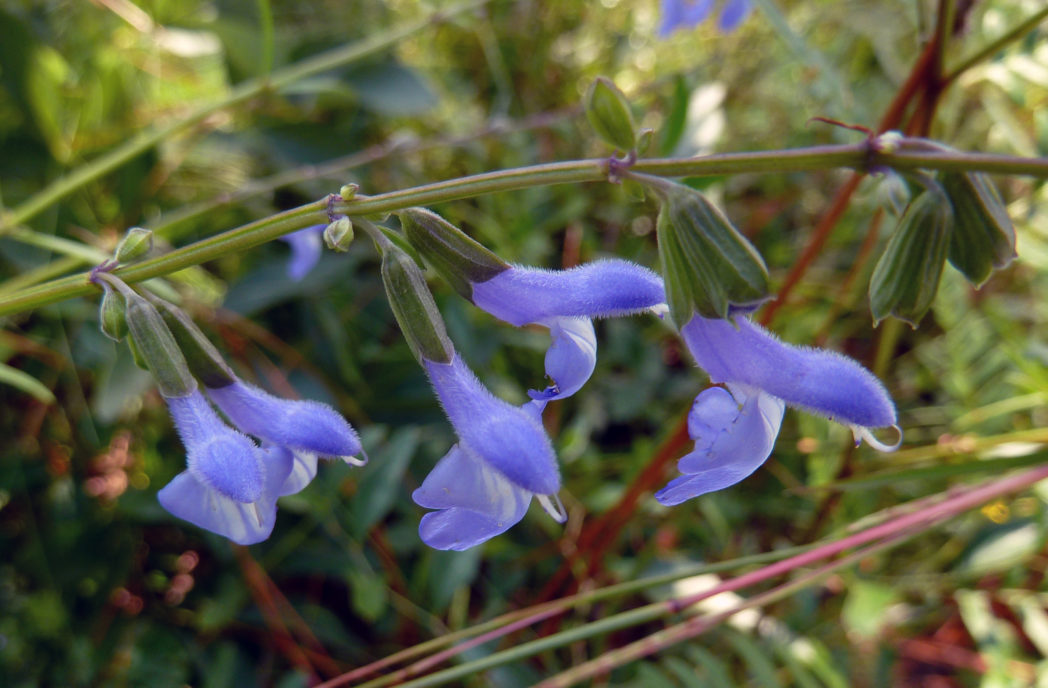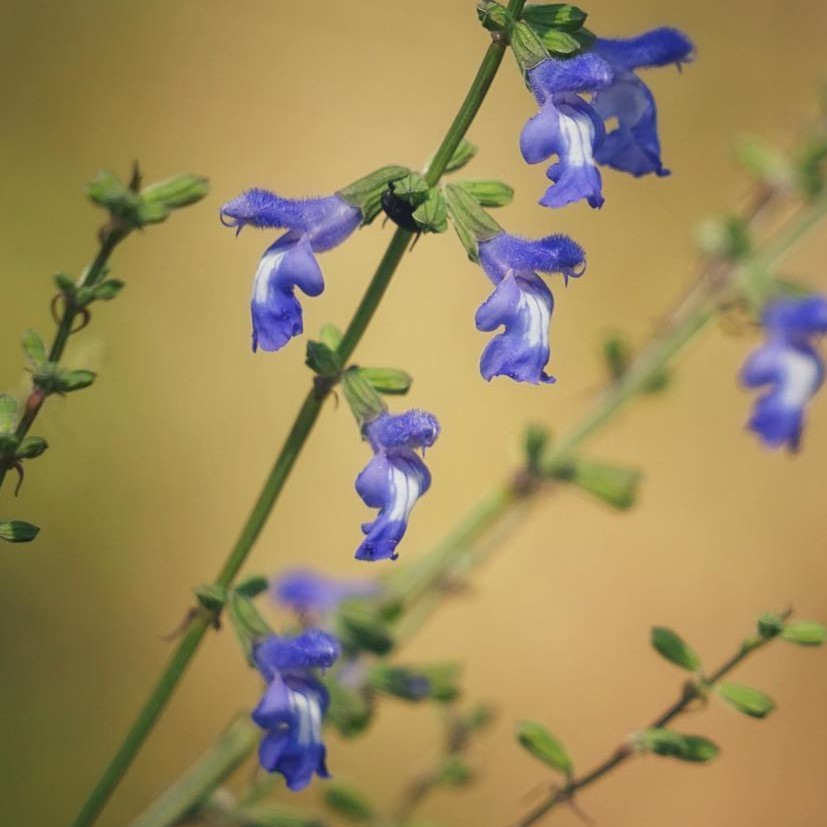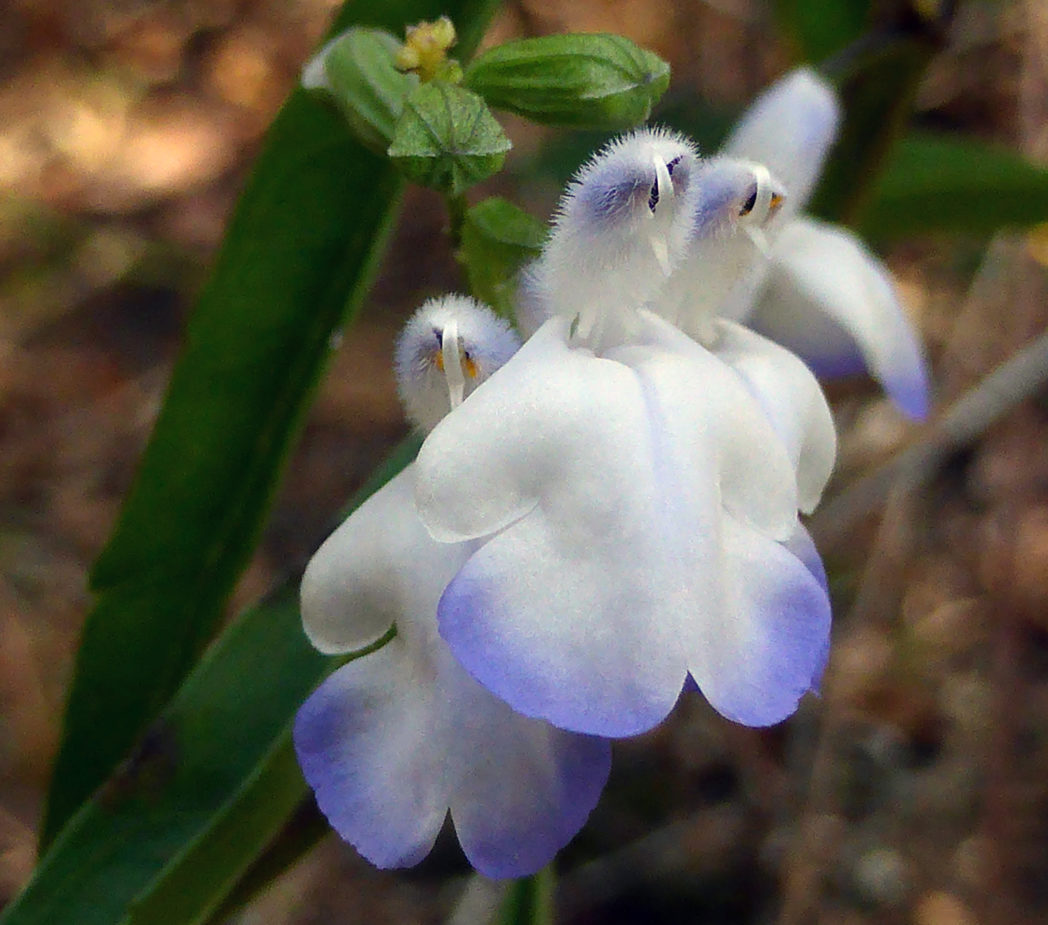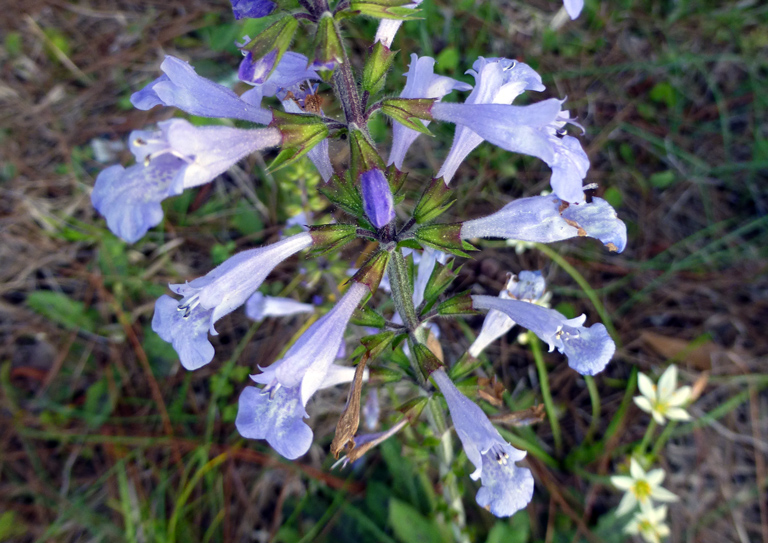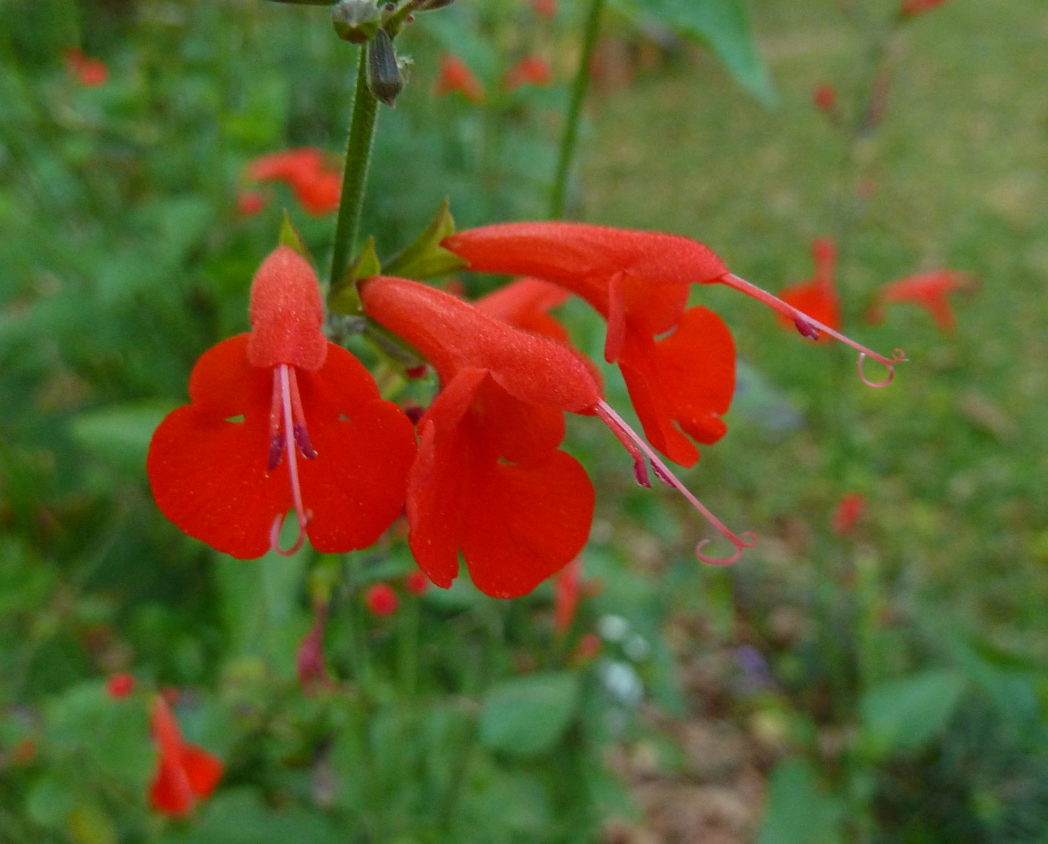Azure blue sage
Pictured above Azure blue sage (Salvia azurea) by Eleanor Dietrich. Click on terms for botanical definitions. View post as a PDF.
Azure blue sage (Salvia azurea) is a deciduous perennial wildflower that occurs naturally in flatwoods and sandhills. Its striking cerulean flowers bloom August through November, attracting a variety of bees, butterflies and even hummingbirds.
As the name suggests, Azure blue sage blooms are a bright sky-blue in color. Flowers are two-lipped and borne in whorls on terminal spikes. The lower lip may bear two white stripes, or in rare cases, may be white with a bright blue edge (see photo below). Calyces are tubular and pubescent. Leaves are petiolate, narrowly lanceolate with entire to serrated margins. Leaf surfaces may be smooth or pubescent. Azure blue sage is unlike other Salvias in that it produces only stem leaves — no basal leaves. It does, however, have the telltale square stem that Salvias and other members of the mint family have.
Family: Lamiaceae (Mint family)
Native range: Panhandle, north and central peninsula, Lee and Broward counties
To see where natural populations of Azure blue sage have been vouchered, visit florida.plantatlas.usf.edu.
Lifespan: Perennial
Soil: Very dry well-drained soils
Exposure: Full sun
Growth habit: 2–4’+ tall
Propagation: Seeds, cuttings
Florida regions of landscape suitability: North, Central, South
Garden tips: Azure blue sage is suitable for mixed wildflower and naturalistic plantings, particularly if planted with tall native grasses such as bluestem (Andropogon spp.) that can help support the tall, sometimes spindly-looking stems.
Azure blue sage is sometimes available from nurseries that specialize in Florida native plants. Visit www.plantrealflorida.org to find a nursery in your area.
Learn more about Azure blue sage from the Florida Native Plant Society and the Institute for Regional Conservation.
For information on other Salvia species, see these resources:

